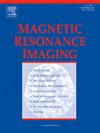Whole-body magnetic resonance imaging in myxoid liposarcoma: Toward a new standard?
IF 2
4区 医学
Q2 RADIOLOGY, NUCLEAR MEDICINE & MEDICAL IMAGING
引用次数: 0
Abstract
Myxoid/Round cell liposarcoma (MLPS) is the second most common subtype of liposarcoma (LPS), accounting for approximately 5 % of all soft tissue sarcomas (STS). Unlike other LPS subtypes, MLPS is characterized by a distinct pattern of metastasis, often involving bones and soft tissues rather than the lungs. Skeletal metastasis occurs in a significant proportion of MLPS patients, particularly those with high-grade tumors, making early detection critical for optimal management. While MLPS tumors are known to be highly radiosensitive and chemosensitive, current screening strategies for bone metastases remain suboptimal. Recent advancements in imaging, particularly Whole-body magnetic resonance imaging (WBMRI), offer promising potential for enhancing the detection of both bone and soft tissue metastases in MLPS patients. This article explores the clinical utility of WBMRI in MLPS, reviewing its ability to detect metastatic lesions, discussing various imaging protocols, and highlighting supporting data from recent studies. The paper emphasizes the role of WBMRI in improving disease staging, thereby guiding more personalized therapeutic strategies for MLPS patients.
黏液样脂肪肉瘤的全身磁共振成像:迈向新标准?
黏液样/圆细胞脂肪肉瘤(MLPS)是脂肪肉瘤(LPS)的第二常见亚型,约占所有软组织肉瘤(STS)的5%。与其他脂多糖亚型不同,MLPS的特点是有明显的转移模式,通常累及骨骼和软组织,而不是肺部。骨转移发生在相当大比例的MLPS患者中,特别是那些高级别肿瘤患者,因此早期发现对于最佳治疗至关重要。虽然已知MLPS肿瘤具有高度的放射敏感性和化学敏感性,但目前骨转移的筛查策略仍然不理想。成像技术的最新进展,特别是全身磁共振成像(WBMRI),为加强MLPS患者骨和软组织转移的检测提供了有希望的潜力。本文探讨了WBMRI在MLPS中的临床应用,回顾了其检测转移性病变的能力,讨论了各种成像方案,并强调了最近研究的支持数据。本文强调WBMRI在改善疾病分期中的作用,从而指导MLPS患者更个性化的治疗策略。
本文章由计算机程序翻译,如有差异,请以英文原文为准。
求助全文
约1分钟内获得全文
求助全文
来源期刊

Magnetic resonance imaging
医学-核医学
CiteScore
4.70
自引率
4.00%
发文量
194
审稿时长
83 days
期刊介绍:
Magnetic Resonance Imaging (MRI) is the first international multidisciplinary journal encompassing physical, life, and clinical science investigations as they relate to the development and use of magnetic resonance imaging. MRI is dedicated to both basic research, technological innovation and applications, providing a single forum for communication among radiologists, physicists, chemists, biochemists, biologists, engineers, internists, pathologists, physiologists, computer scientists, and mathematicians.
 求助内容:
求助内容: 应助结果提醒方式:
应助结果提醒方式:


